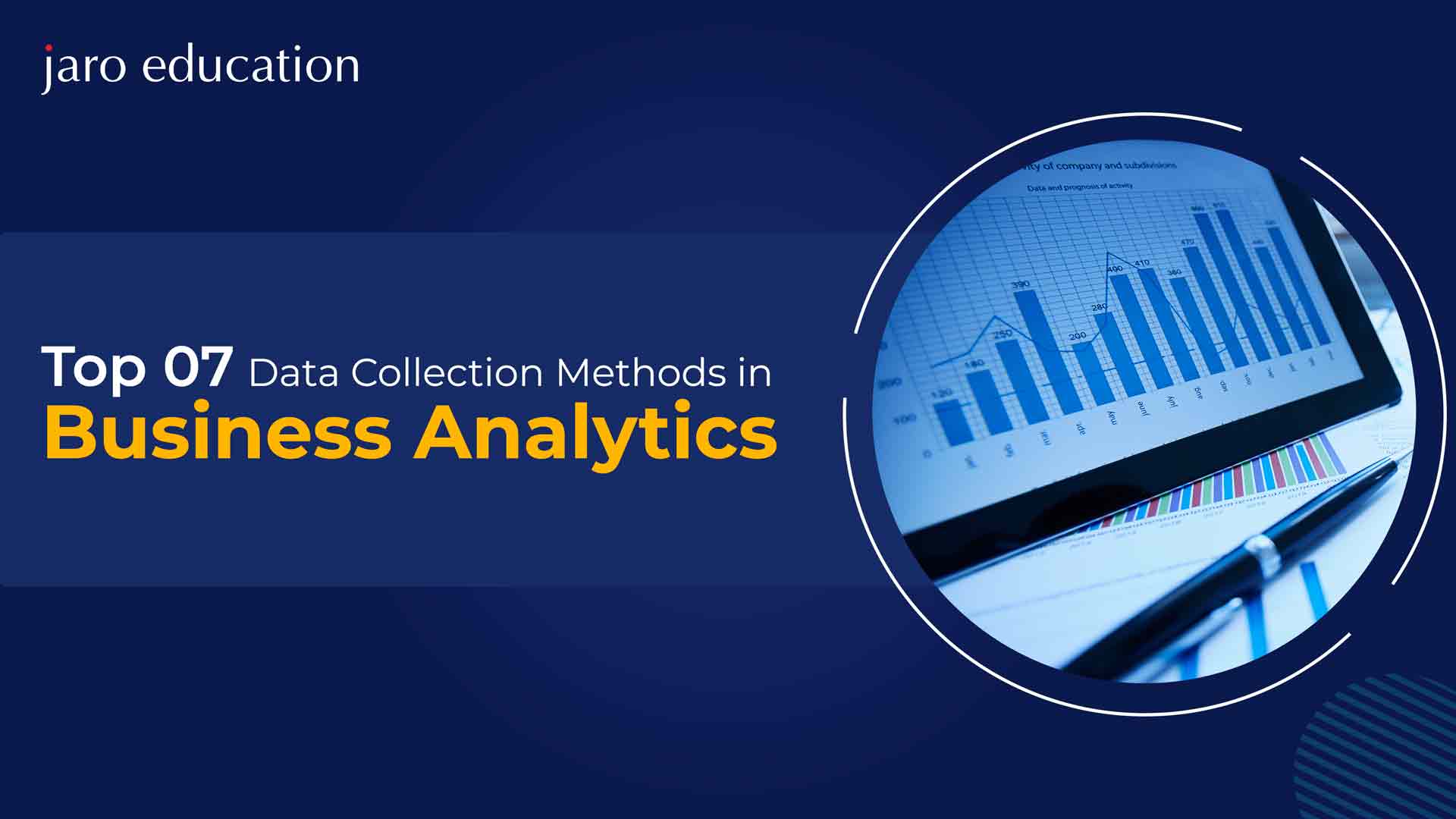In business analytics, data collection methods play a vital role in data gathering. The techniques used in business analytics can be broadly classified into two main types: qualitative and quantitative. Qualitative techniques are used to gather descriptive data, while quantitative techniques are used to collect data that can be analyzed statistically.
Qualitative data collection methods include interviews, focus groups, and observations. Quantitative data collection methods include surveys, questionnaires, and experiments.
Data collection is a process of gathering information from various sources. It can be done manually or through automated means. The data can be gathered from primary or secondary sources.
Primary data is the data that is collected directly from the source. It is collected through surveys, interviews, focus groups, and observations.
Secondary data is the data that is already available and has been collected by someone else. It can be gathered from sources like books, articles, websites, and government reports.
The data collected through business analytics can be used to make decisions about various aspects of the business, like marketing, product development, and human resources. The data can also be used to improve the efficiency of business processes.
7 BUSINESS ANALYTICS DATA COLLECTION METHODS
1. Surveys
Physical or digital questionnaires are used in surveys to gather qualitative as well as quantitative data from participants. Internet surveys offer the chance for widespread distribution and could also be reasonably priced. Using a free application can make conducting a survey completely free, according to the US Bureau of Labor Statistics.
When designing and conducting surveys, be aware of bias’s effects, which include:
-
Collection prejudice:
It is possible to unintentionally craft biased survey questions. When constructing questions, be mindful of this to ensure that your respondents respond truthfully and aren’t influenced by your wording.
-
Contextual bias:
Your respondents’ replies can be skewed toward what is socially acceptable because they know you will read them. To get the entire picture, think about combining survey data with behavioural information from other techniques of data collecting.
2. Transactional Tracking
Keeping track of this information might help you better understand your consumer base and make judgments about focused marketing campaigns.
The ability to save data as soon as it is collected is frequently provided by e-commerce and point-of-sale platforms, making this a seamless data-collecting technique that can be profitable in the form of customer insights.
3. Interviews and Focus Groups
You can employ both focus groups and interviews to collect qualitative and quantitative data. Focus groups usually consist of multiple persons, whereas interviews are normally conducted one-on-one. Real-time observation of their interactions with your product and the recording of their emotions and inquiries might yield insightful information.
Focus groups and interviews are data collection techniques that allow you to inquire about individuals’ thoughts, drives, and emotions surrounding your brand or product, as well as surveys. To avoid this, you can employ a facilitator to plan and carry out interviews on your account.
4. Observation
Due to the candour, it provides, seeing users engage with your product or website might be helpful for data collection. You can see in real time if your customer experience is challenging or unclear.
However, organising observational sessions can take time and effort. You can monitor a user’s involvement with a beta version of your website or product by using a third-party service to capture users’ navigation across your site.
Observations give you the opportunity to examine how users engage with your product or website directly. However, they are less accessible than other data collection techniques. To enhance and build on areas of success, you can use the qualitative and quantitative data collected from this.
5. Online Tracking
Using pixels and cookies, you can collect behavioural data. Both of these programmes track users’ online activity across several websites and give information about the material they are most interested in and interact with.
Additionally, you may monitor user activity on your company’s website, including the most popular pages, whether or not visitors are perplexed while using it, and how much time users spend on product pages. You can utilise this to enhance the website’s look and facilitate users’ navigation to their desired location.
It’s frequently free and simple to set up to insert a pixel. The cost of implementing cookies can be high, but the quality of the data you’ll get might make it worthwhile. Once pixels and cookies are installed, they begin to collect data on their own and require little to no upkeep.
It’s crucial to remember that tracking online activity may have ethical and legal privacy concerns. Ensure you comply with regional and industry data privacy rules before tracking users’ online activity.
6. Forms
Online forms are useful for collecting qualitative information about users, particularly contact or demographic details. You can utilize them to gate content or registration, such as for webinars and email newsletters, and they’re reasonably cheap and easy to set up.
Afterwards, you may make use of this information to get in touch with potential customers, develop demographic profiles of current clients, and carry out remarketing activities like email workflows and content recommendations.
7. Social Media Monitoring
Monitoring follower interaction on your brand’s social media accounts is a simple method to keep tabs on information about the motives and interests of your audience. Although many social media platforms come with statistics, other third-party social media sites provide more thorough, organised insights gleaned from many channels.
You can use social media data to ascertain which topics are most significant to your following. For instance, you might observe a sharp rise in engagements when your business posts about its environmental initiatives.
Consider enrolling on one of the best business analytics online courses in the IIM Tiruchirappalli – PG Certification Programme in Business Analytics & Applications, enabling organisations to make data-based decisions. Businesses may make better judgments about their goods, services, and operations by analysing data to find trends and patterns. Businesses can enhance their marketing and sales tactics as well as their understanding of their clients with the aid of business analytics.






